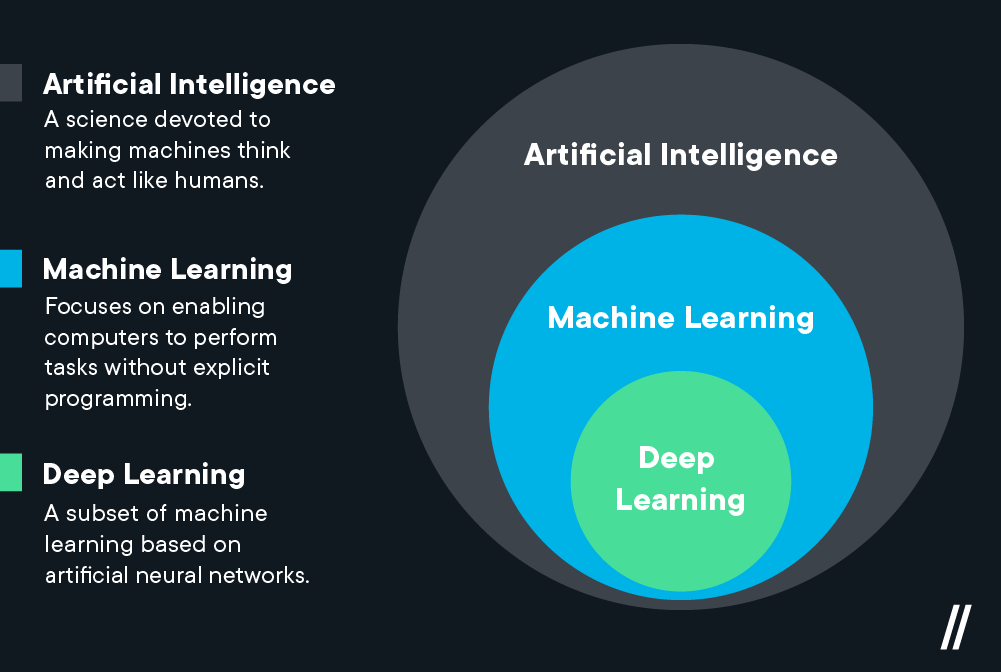Difference between Artificial Intelligence, Machine Learning and Deep Learning?
 Naveen
Naveen- 0

Artificial intelligence (AI) is a term that encompasses computer systems designed to imitate human intelligence. It is an exciting field that has attracted considerable attention in many industries, including finance, hospitality, education and entertainment. Artificial intelligence is planned to simulate human behavior and thought processes, making it one of the most important trends of this decade. Its potential to change the way we work and live is enormous.
Machine Learning (ML) is a subset of artificial intelligence that allows machines to learn and evolve independently without special programming. This technique has been widely recognized for its ability to analyze vast amounts of data and identify patterns.
There are three types of machine learning: supervised, unsupervised and reinforcement learning.
Unsupervised learning algorithms, such as self-organizing maps and clustering algorithms, do not require a teacher or instructor to guide them to study or learn.
Deep Learning (DL) is a subset of ML and involves neural networks trained on large sets of data to recognize and represent complex concepts such as pictures of cats and dogs. The technique is based on processing millions of examples using layered neural networks to identify patterns and create a model. Deep learning is best suited for tasks like image classification, object detection and image segmentation, rather than specific natural language processing (NLP) tasks like image tagging, which Google can also do.
Understanding the Differences
AI, ML, and DL have many similarities, but they also have significant differences. Here are some key points to consider:
AI is a broad field that covers any computer system that imitates human intelligence. ML is a subset of AI that allows computers to learn and improve without being explicitly programmed. DL is a subset of ML that uses neural networks to represent complex concepts.
Supervised learning involves a labeled input dataset, unsupervised learning uses an unlabeled input dataset, and reinforcement learning involves learning through trial and error.
Deep Learning uses layered neural networks to analyze vast amounts of data, identify patterns, and create models.
AI, ML, and DL are all exciting fields with immense potential for the future. Each technology has its own strengths and weaknesses, and understanding these distinctions is essential in utilizing them effectively.
Conclusion
Artificial Intelligence, Machine Learning, and Deep Learning are significant technological innovations that have transformed the way we live and work. Although they share similarities, they differ in their capabilities and use cases. AI is a broad field that encompasses any computer system that imitates human intelligence. ML is a subset of AI that enables machines to learn and improve without being explicitly programmed. DL is a subset of ML that utilizes neural networks to represent complex concepts. Understanding the differences between these technologies is crucial in applying them effectively and harnessing their full potential.
